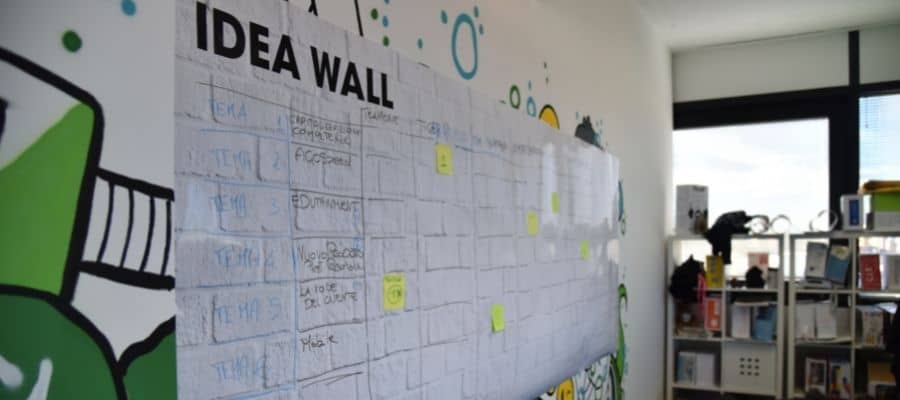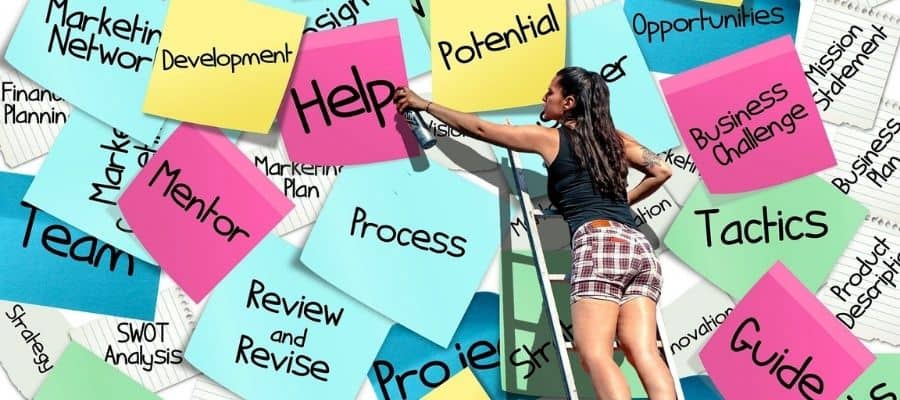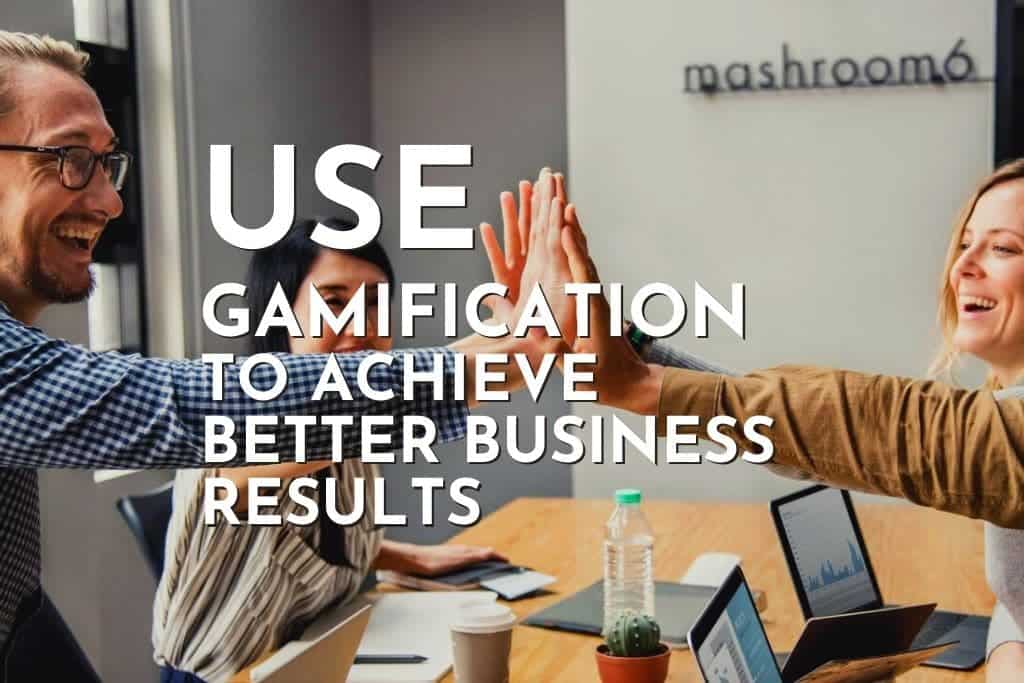Is work something you like? Probably not, unless you landed a dream job doing exactly what you love for money. But there is this technique through which businesses can train their employees to love otherwise boring tasks. It is called gamification and is based around concepts that originated in the most powerful form of digital entertainment currently known to man- gaming.
Game design has only been around for a few decades, but within this short period of time, the developers have learned how to tap into our subconscious minds. They are masters at creating addictive experiences that players willingly spend several hours of their time on.
But most of the time, gaming is treated as a form of escapism. A means for us to forget about the stress and responsibilities of real life, diving into an immersive virtual world where we can be the best versions of ourselves. It is not an inherently productive activity or helpful to society unless you somehow manage to take the core concepts and apply them to businesses.
Management, marketing, training, etc., can all reap amazing benefits by incorporating gamification into their workflows. Despite what many people think, gamification and gaming are very different things. If you blend gamification into your online education program that teaches 3D art design, it doesn’t mean the students will spend all day playing games instead of viewing courses.
On top of that, the applications of gamification extend far beyond just business and education. It can even be used to make daily activities such as exercise more fun and engaging. We will show you how, with some examples later on in this article.
So, exactly what is gamification? Gamification is the process of taking something that already exists- a website, enterprise application, online community, etc., and integrating game mechanics into it to motivate participation, engagement, and loyalty. Basically, it involves the application of game design concepts in a non-gaming scenario to make difficult tasks more palatable.
A basic example of this concept would be rewarding scouts with a badge for certain activities that they normally find boring, such as tying knots or orienteering. By implementing a rank system through badges, you introduce competition into an activity that they otherwise wouldn’t partake in. Just like badges and trophies in video games, these scout badges for otherwise mundane tasks are a symbol of status, achievement, completion, and skill.
When playing an open-world RPG, you really don’t care about some random farmer in the woods who needs you to find his missing dog. But completing this side mission will fill up your progression bar and level your character, so you do it. Besides, you will get a shiny badge of accomplishment, and there are few things gamers love more than badges and trophies.
When gamification gurus talk about “game mechanics” to be used for increased engagement of employees, what exactly are they referring to? Well, gamification uses 10 basic game mechanics. But first, let us define what we mean by the term “game mechanics.”
Game mechanics are constructs and rules designed for the player to interact with inside a game. Or, you can call them the fundamental rules of the game world, which define what the player does within the game. Gamification uses 10 primary game mechanics to motivate and engage users. Any combination of these 10 mechanics can be used to achieve business goals- Feedback, Competition, Transparency, Goals, Badges, Leveling Up (as status within a community), Onboarding, Collaboration, Community, and Points (as measurable evidence of accomplishments).
The Applications Of Gamification

You now have an idea of what it is, but where can you apply these concepts? Well, pretty much any corporate business or educational system can benefit from increased motivation and engagement among participants. These participants can be students, employees, customers, or even your dad while he’s doing his morning workout.
We are looking to transform everyday mundane tasks and tedious chores into a fun game with achievements, goals, competition, and rewards. There are various sectors in which gamification can be applied.
Let’s take marketing; for example, gamification can help make your small business more visible to both current as well as potential customers. Gamification strategies can be applied to your website, blog, app, social media, and online courses. Talking of online courses, gamification is a great way to motivate students in order to compete among themselves.
Students can monitor their progress more easily and get immediate feedback. Data is constantly gathered, tracking the student’s performance and showing a measure of their academic success. How long it took them to complete a course, how many attempts to pass a certain test, which topics they scored well in, etc.
All this data can be easily accessed and shared between students, professors, and parents. Gamification provides students with tangible measures of their progress, such as badges and rankings. The students are rewarded with activities, as well as simple tasks that encourage creativity and learning through doing.
Gamification is also being used by healthcare firms, insurance companies, and fitness equipment manufacturers to inspire and engage their users. A nice example of this is Fitbit, where friends and family members challenge and motivate each other by sharing statistics and weight-loss goals. People will reach their fitness goals earlier if they compete for miles run, calories burned through eating healthy food, etc.
Some workplaces use gamification in their employee engagement apps. For example, hubEngage uses points, leaderboards, quizzes, badges, etc., to keep employees and contract workers engaged within the workplace. Employees get personal dashboards to track their progress through gamification modules.
They can also see how they compare against colleagues at work, which breeds a sense of competitiveness and further enhances productivity. Companies offer small, tangible rewards to employees for achieving milestones. Gift cards, bonuses, etc., can increase employee motivation and participation in group challenges or activities.
Examples Of Gamification Being Used Successfully

Modern examples of gamification extend far beyond the confines of a corporate business room. Recently, a training facility was opened in Monmouth County, New Jersey, which uses VR to train law enforcement officers on how to deal with life-threatening scenarios.
This program is called “STARS,” an acronym for Situational Training and Response Simulator. The program consists of 2 sections, one in which the officer is placed within a realistic environment containing tangible real-world objects. They deal with non-lethal training rounds, smoke, fire alarms, strobes, and various other kinds of simulated effects to copy a real-world situation.
In the second part of the training, they are strapped into a VR game with a headset, gun, and a specially designed room with an instructor monitoring their responses and statistics. The simulator provides a 300° view of the situation and can generate a whole bunch of scenarios ranging from terror attacks to school shootings. The gun has realistic weight and recoil to simulate an actual weapon, and officers are supposed to deal with the issue in the most optimal way.
Moving on to a less stressful example of gamification being used to enhance engagement, we’ve got Dropbox. They want to get more users onboard and need to do it quicker in order to be competitive. They give you extra storage space if you introduce friends to the service, an extra 500MB per friend.
There are various activities on the website to keep you engaged or hooked- connecting your social media accounts or taking a tour of their services. Their intuitive onboarding experience and rewards-based invitation system create a viral loop by incentivizing users to invite friends. This brings in an endless stream of new users.
Another example of gamification being used to boost productivity is when Microsoft created its “Language Quality” game. This game used a simple Silverlight app to let users view examples of translated text on their screens to check for language accuracy. Employees were intentionally shown bad examples of translation to ensure that they are paying attention.
According to data, 4500 employees reviewed 500,000 screens to correct or improve translations based on their native language. Microsoft Japan even took a day off, so employees could play the game. And this allowed the Japanese to win the top spot on the leaderboard.
Utilize Gamification To Show Personal Development

You can utilize gaming mechanics such as scores, achievements, etc., to denote employees’ progress. Make sure that the points and other progression elements are meaningful to an employee’s career and reflective of their ambitions.
Make these virtual points reflect their progress in real life. For example, when an employee completes the project before the deadline, you give them bonus points. Or if they go out of their way to train in certain skills even though the job description doesn’t explicitly state they have to do so.
In that case, you can reward the employee with new achievements. Make sure that you’ve included some form of social sharing within this system. That way, employees can see each others’ scores while also being able to compare their own progression with the leader.
Give Rewards And Recognition

You’ve integrated points and leaderboards into your work environment to motivate employees and boost their competitive spirit. Great, now you need to make sure they have a reason to compete and push forward. Rewards and recognition are two of the biggest driving factors for retaining employee motivation.
Gift your workers with badges when they complete projects to give them a visual reminder of their accomplishments. Reward them with coupons, tickets, bonus money, etc., for increased performance. This will act as a motivator to keep them working hard constantly, all year round.
Rewards also motivate those who are watching since they too will work better in order to earn a chance for recognition and promotion within the company. Don’t just reward employees for working harder, but also for coming up with new and creative ideas.
Strengthen Your Company Brand

Like most other companies, yours too must have a mission and set of values. These values define who you are as a company, the service you’re looking to provide, etc. Unfortunately, only 4 out of 10 employees are aware of what their company stands for.
When employees know and understand company values, they feel more engaged at work. Using gamification, you can raise brand awareness among your employees. Bake your mission values into every aspect of the LMS, and customize gamification features to provide employees with a strong sense of purpose at work.
Say your company aims to create the best confectionery products. Show this across your entire platform, create a theme out of it. Design your badges, so they look like sweets, shower employees in rainbow sparkles instead of generic XP, and modify the online training courses to remind employees about the bigger picture.
Carefully Blend Teamwork With Competition

Both competitive motivation and rewards have positive effects on a workforce, but only when used in moderation. While both of these elements are highly necessary for employees to perform well in certain tasks, they can lead to massive issues when taken to the extreme.
Make it so that the competitive drive doesn’t result in a mindless race to the top of the leaderboards. Instead, employees should use competition to maximize personal potential and as a motivator to perform better in teams.
Maximize Your Intellectual Capital

As a worker within a company, you look forward to retiring at some point in your life. The HR team has to bear the brunt of this effect since over 10,000 people retire each day, just in the United States. When an employee retires, they take all their intellectual capital along with them.
Hence, we call this a “brain drain.” But guess what, this wouldn’t be an issue if the departing employees shared their knowledge with co-workers instead of hoarding all of it for themselves. So how does gamification fix this problem? Simple, you set up discussion groups in the Learning Management System of your company. Within these groups, you create expertise while simultaneously training future employees to fill the shoes of departed leaders.
You can also integrate leaderboards into these discussion groups, so each commenter earns points for answering questions. This will let people know who to ask stuff since the person with the most knowledge will be on top. And you can create subject matter experts by dividing discussion groups based on topics. Each discussion group will focus on answering questions pertaining to a specific topic.
Remove The Skill Gap

We face a serious issue in the corporate sector right now. According to World Economic Forum research, 25 percent of employees admit they suffer from a skill mismatch within their current job. And we predict that by 2020 35% of the skills required by workers will have changed, irrespective of industry.
Not being motivated or engaged enough is one problem, but how will employees deal with issues they aren’t qualified to solve? You will always fall short of business objectives. This can be fixed by customizing the LMS so that employees can get personalized training based on their individual needs, role, and ability. Just like “leveling up” in a video game, employees will be able to track their improvement through a progress bar.
Separate the course into different “levels” so each employee only learns what they need to, instead of sifting through tons of irrelevant filler content. Design the LMS so that employees get “Experience Points” for each level of training they complete. XP can be boosted by taking tests, asking questions, and submitting projects.
Include “optional” and “required” content within each level, so employees can see exactly what is needed to level up. Optional training material is suggested content that isn’t required right now but will help them in future progression when they reach higher levels.
Gamification Drives Innovation

Are your workers too comfortable with their current ways and scared of trying out new ideas? They may be creative but lack the focus and commitment required to execute their vision. One way to deal with this issue is by holding “idea” and “execution” competitions within the company.
Boost the effectiveness of these competitions by introducing a social element and encouraging team play. Give employees extra points for making cross-department connections, attending meetings with other teams, etc. This method might even help you in procuring new IT systems since you reward and incentivize early adopters while penalizing the workers who cling to their old tech.
Target Audience Orientation

In order to gamify your marketing strategy, you must understand your target audience first. Create a profile of your customers by analyzing their demographics and psychographics. How old they are, what is their gender, how often do they spend on relevant products, which social media platforms they prefer, etc.
Plan a scenario in which they would want to use your product over that of a competitor. Boost your brand awareness within the company, so employees have a clear vision of what they want to achieve. Base your strategy around a few key principles- learning, exploring, socializing, achieving, and obtaining rewards. And of course, don’t forget to create a fun and unique experience. Corporate culture can get quite boring at times, so spice things up with gamification.
Use Gamification To Retain Talent

According to 87% of business leaders, retaining existing talent is one of their top priorities. Just think about it, if your employee retention figures are bad, it could result in loss of creativity and innovation within the company. Not to mention, you also suffer from decreased profits.
Or even worse, your talented employees could end up finding work with your competitors. A study by Oxford Economics shows that it takes nearly £30,000 to replace an employee. So what is the gamification solution to all of this? Simple, you need to redesign the LMS.
Around 65% of employees say that access to better training would improve their loyalty towards the company. Instead of forcing new hires to dig their way through boring content slides, use personalized content and customizable training paths.
Leaderboards, a point system, group discussion boards, social media sharing, etc., are all great ways to motivate your employees. Not only are you making the learning process more intuitive and personalized, but you’re also fostering competition among employees to see who gets more XP and higher levels on the leaderboard. This boosts engagement, increases employee skills, and improves talent retention.
Engage Your Employees And Boost Their Motivation

Employee engagement is crucial for maintaining high team productivity. It also decreases the chance of employees leaving your company for another. So, how to make your teams feel more connected to the company? How to make them sympathize with the business mission and put in the extra effort needed to achieve short-term goals?
The best way to make employees value your business is by letting them know that you value them. When your teams feel like their contributions matter, they will put in the extra work. A September 2018 study by the Bureau of Labor Statistics shows that only 26% of people feel valued in their workplace.
Use virtual rewards to boost your employee’s morale, gift badges, and medals to show praise for their efforts. Instead of using the same generic badges for everyone, create customized ones for employees who show exemplary behavior. Feature their work on discussion boards and company newsletters as an example of creativity and innovation.
Revolutionize Your Recruitment Process

A nice example of a company using gamification to hire new talent is Google. They created the Google Code Jam back in 2003, an international programming competition designed to select top-tier engineering talent as potential hires. This competition is hosted and administered by Google; they fill it with algorithmic challenges.
Finalists are invited to Google for the chance to compete for cash prizes, and some of them even end up working in the company. You can use a similar competition that is gamified with leaderboards, medals, etc., to secure talented individuals for working in your company. Design a system that identifies the right applicant for each job position and helps the participants learn about your company culture and job requirements through gamified activities.
Evaluate Success

One of the major issues plaguing companies these days is the lack of return on investment for their employee training programs. The average company spends 702 dollars yearly to train each employee. But, is this training budget worth it? Are the employees actually engaged?
A great way to verify trainee engagement is by using gamified courses. You can check the involvement of trainees by looking at their progress bar, achievements, activity on discussion forums, and leaderboard rankings. What is the average level reached by an employee in the training program?
Higher levels indicate more engagement. Incorporate review systems for each course, so employees can leave feedback. A review that reads “I understand the company mission and enjoyed the training” is a clear indicator that you shouldn’t cut training budgets.
Increase The Time Spent By Customers On Your App

Creating an addictive app is all about transforming the user experience, so your customers find it fun and engaging. To do this, you must set clear objectives. Don’t just copy gamification strategies from another app. You need to study your user data while customizing the experience to boost acquisition and conversion rates.
Your gamification plan should make users feel like the app is of good value; they need to feel victorious after every reward or experience point. If the achievements are cleverly designed, your users will stay longer and invite friends through social media.
Don’t use a bunch of shiny graphics and animations; that will simply make your app confusing since it is not a game. Focus on making a pleasurable experience similar to a game that is addicting yet simplistic. Once again, we’re not advising that you turn your app into a game. Rather, you should copy the core essence of a game to create a unique experience that boosts user retention.
Improve Customer Service

This one is pretty simple to do, but execution will vary depending on your company structure and the service offered. Allow customers to contact support directly through the app and reward them with loyalty points for every minute they stay on hold. This way, your customer feels like their patience has value and that your company is committed to delivering a better experience.
Boost Call Center Employee Satisfaction And Performance

You can boost retention and productivity for hourly employees by creating a gamified website specifically for them. Employees can log in to this website and manage their profiles, view lives challenges, review performance data, etc.
This strategy was used by RMH Franchise Corporation, which operates 130+ Applebee restaurants across the United States. Their gamified website called Bee Block, generated automated challenges that were broadcast through television sets placed strategically inside restaurant workstations. The results of this program showed a 20% decline in employee turnover, which is insanely good when you consider the average turnover rate for hourly restaurant employees- 125%.
Conclusion
To get the best possible results from gamification, you must understand your venture and set appropriate goals. Understand the business model of your company, its architecture, and the landscape in which it competes. Then, it should be easy to decide which elements of gamification are viable in your scenario.
Do you understand the userbase you are looking to target? Are they customers or your employees? What actions do you want them to undertake? Don’t be overwhelmed with the hype surrounding this buzzword. Instead, look for examples of similar businesses that have successfully integrated gamification into their workflow.
Gamification shouldn’t be the default answer to solve any problem within a company. First, you need to clearly define business objectives and undertake a critical analysis of the viability of gamification. Gamification, when used, should be User-Centric. Motivate employees and customers to achieve their goals. Note that the best use of gamification happens when user goals overlap with your own business goals.

